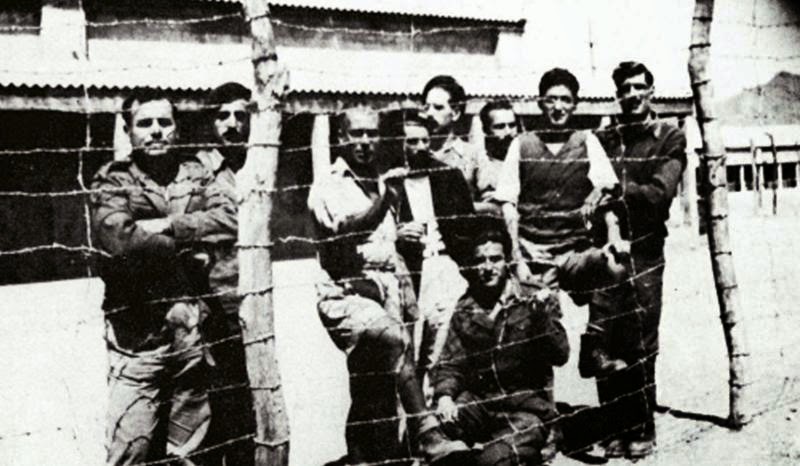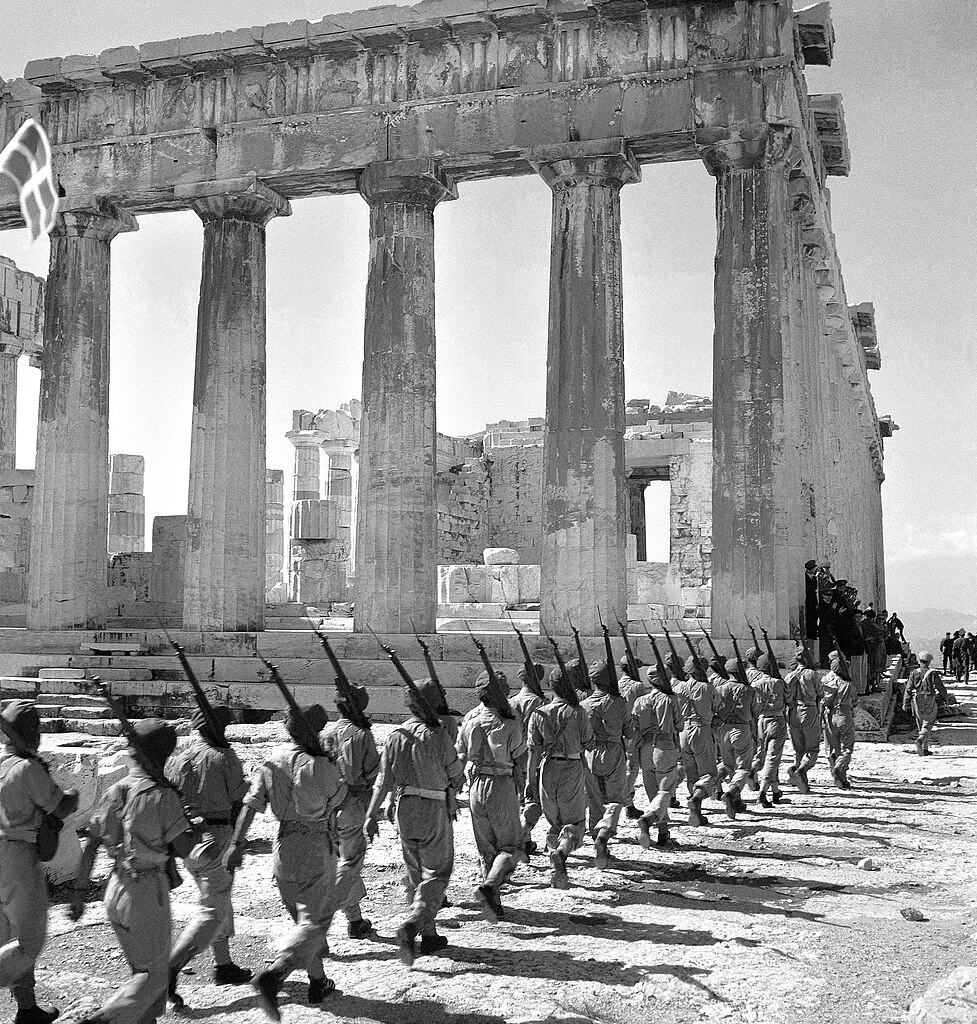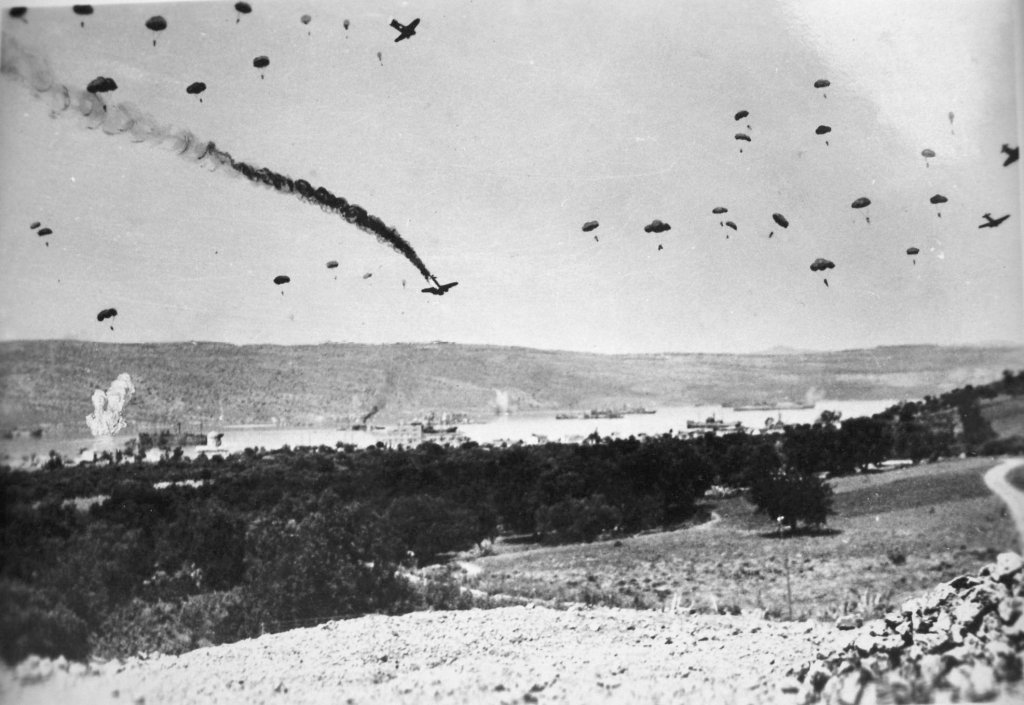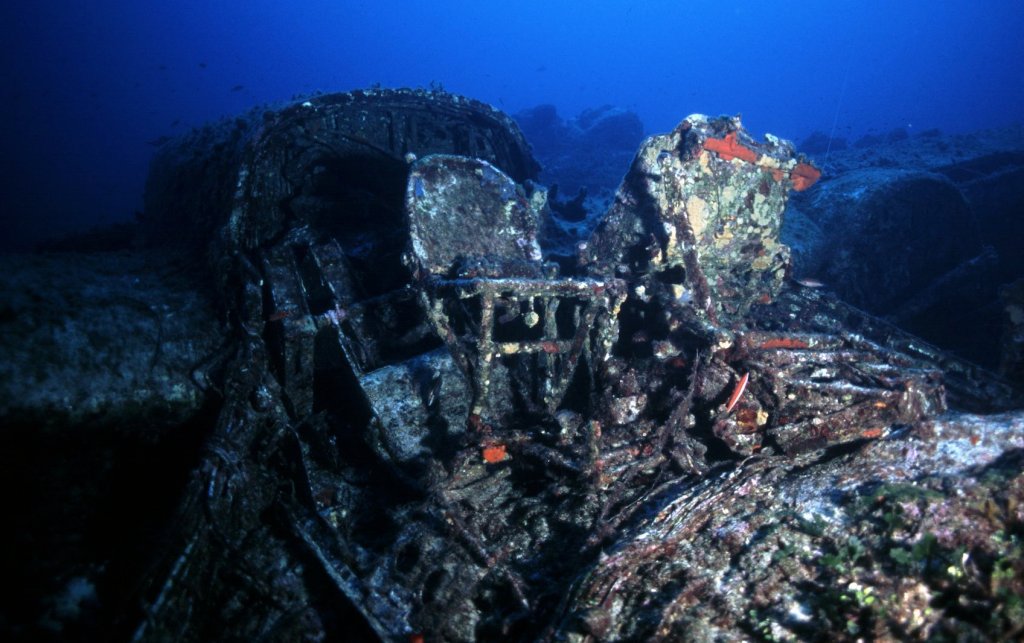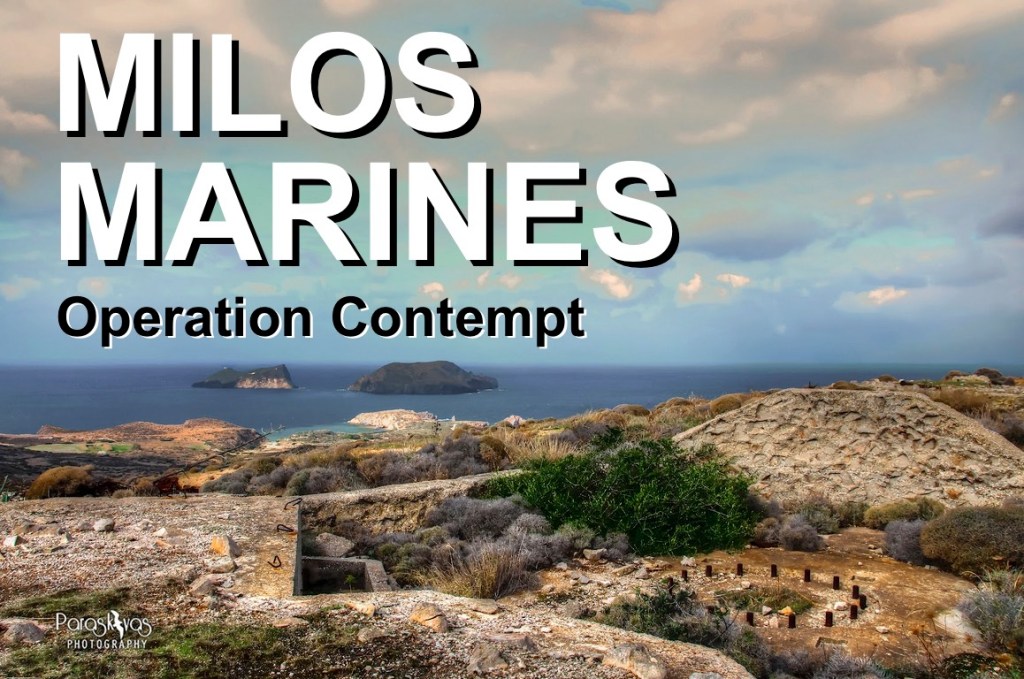Part III of IV
This SERIES of articles was originally published in the Australian newspaper Neos Kosmos (Ethnic Publications Pty Ltd) in October 2019 to commemorate the 75th anniversary of the Liberation of Greece.
In October, the WWII invasion of Greece in 1940 and its eventual liberation in 1944 are both commemorated. Join ww2stories.org in a special four-part series as Ross J. Robertson recounts the historical circumstances that led to the country’s freedom.
October 1944: Operation Manna
The month began inauspiciously for the occupiers. As recorded in the German Navy War Diary, a new Royal Navy task force comprising “three aircraft carriers, two cruisers and five destroyers” entered the Aegean on the 1st of October. Unknown to the Germans, they were part of Operation Manna – the retaking of Greece – and would soon start the devilish job of clearing the Aegean and its islands as they worked their way north.
The military situation for the Germans was dire and they knew it. Urgent pleas for reinforcements made by the German Naval Staff, Operations Division (in Greece) to the German Air Force High Command (in Germany) received the following response on the 2nd of October 1944: “We have not enough fuel supplies in Greece to uphold missions by heavy planes. Although fighter protection is indispensable for the safeguarding of ground organisations, such protection is not available. On account of the present evacuation of the Greek area, new bomber forces can no longer be assigned to this theatre of operations.”
With Luftwaffe air superiority now definitely a thing of the past, the British RAF (Royal Air Force) and SAAF (South African Air Force) were free to run low-level intruder sorties to Greece from southern Italy. They attacked shipping, rolling stock and military targets with relative impunity (see ‘The Allied Air Campaign’ below). RAF intruder squadrons based in Egypt continued to fly long range missions to the Dodecanese islands and Crete, causing havoc to shipping and ground targets, including German gun positions along the heavily fortified Cretan coast. Particularly effective in such missions was the Bristol Beaufighter. 1 Seafires (a version of the famous Spitfire) and Hellcats from the Royal Navy aircraft carriers (HMS Attacker, Emperor, Hunter and Stalker – there were actually four carriers assigned to Operation Manna, although not all were in the Aegean at any one time) also played essential anti-shipping and anti-troop movement air strikes on the Aegean islands.
THE ALLIED AIR CAMPAIGN: The air campaign against German targets in Greece began in earnest over a year earlier. In October 1943, for instance, the United States Army Air Force (USAAF) 12th Air Force Division based in southern Italy sent P-38 Lightnings to strafe Araxos airfield (Patra) on the 6th of October. On the 8th, B-24 Liberators were sent to bomb Tatoi and Eleusis airfields (Athens), Maritsa airfield (Rhodes) and Kastelli and Heraklion airfields (Crete). B-25 Mitchells were also sent to bomb Eleusis on the same day. On the 9th, B-17 Flying Fortresses bombed airfields at Athens (i.e. Tatoi, Eleusis and Kalamaki), Larissa and Thessaloniki, while P-18’s flew a sweep over Corfu (Kerkira). On the 10th, B-17s flew again against Athens airfields while B-24’s bombed Maritsa airfield (Rhodes) and Calato and Heraklion airfields (Crete). P-38’s hit Antimachia airfield (Dodecanese islands) and attacked shipping in Corfu habours. On the 11th, B-25’s bombed Garitsa airfield and P-38s returned to Corfu for another harbour attack. On the 15th, B-25s hit Megalo Mikra airfield (Thessaloniki). On the 22nd, B-25’s struck Eleusis airfield again. On the 26th, B-25s returned to hit Thessaloniki airfields, thereby ending the American missions to Greece for that month alone. In response, German Command, Group South made the following observation (as recorded in the German Navy War Diary on the 13th Oct. 1943):“The population in Greece has expressed general satisfaction about numerous recent enemy air attacks. In Piraeus, the appearance of enemy planes was greeted with jubilant demonstration. This proves that our propaganda has so far been inadequate and requires immediate intensification.” The Germans may have been losing mastery of the skies because their airfields were being blown sky-high, but they still saw the importance of spinning reality.
On the 3rd of October, even as Churchill was meeting with the Greek King in London for a 1:30 pm luncheon appointment, “skirmishes by the Greek Resistance along enemy withdrawal routes” were reported by the United States War Department, Military Intelligence Division. Control of vast regions of the country would now depend on who filled the power vacuum, so the individual Greek resistance groups stepped up their efforts against the retreating Germans.
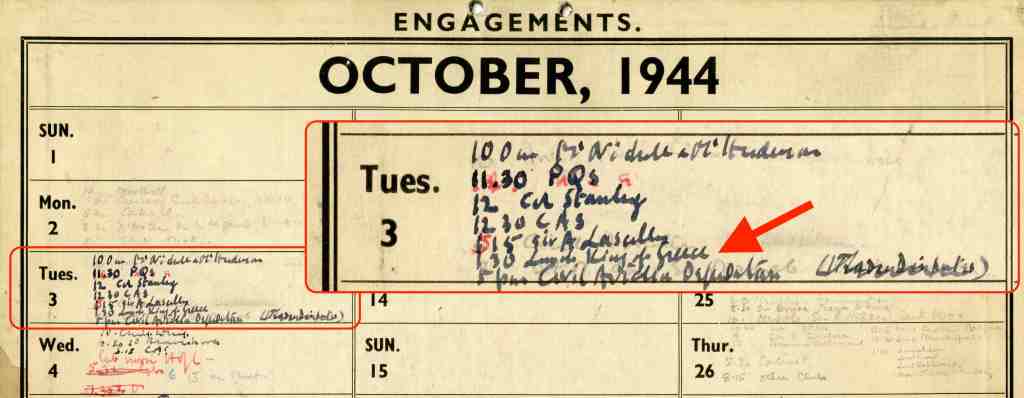
Although unsubstantiated by the records, this power grab may have even lead to instances where the Germans agreed to leave behind munitions and heavy weapons in exchange for safe passage, thereby bolstering the arsenals of certain resistance groups. There is no doubt, however, about the collaborationist Security Battalions aiding the German’s withdrawal by fending off ELAS attacks.
Essential to the liberation of Athens was control of airfields around the capital. On the 4th of October, thirty-nine long-range US 15th Air Force P-51 Mustang fighters flying from Italy strafed Athens airfields (Tatoi, Eleusis and Kalamaki), destroying nine aircraft on the ground and damaging another twenty-one. Proving that the Americans have the propensity to count in large numbers, on the 6th, as many as fifty-five P-51 Mustangs attacked the same airfields, destroying another five aircraft and damaging ten others. On the same day, thirty-five P-38 Lightnings visited the airfields at Thessaloniki (Sedes and Megalo Mikra), with thirteen aircraft destroyed and eight damaged. On the night of the 9th of October, nineteen RAF Wellingtons dropped 44 tons of bombs on Tatoi, Eleusis and Kalamaki. On the 10th, the British Special Boat Service made a move on Megara airfield, just 30 kilometres west of Athens. Two days later, fourteen C-47 transport planes dropped elements of the British 2nd Paratroop Brigade there. Only sporadic shelling impeded them. Nonetheless, they suffered around 25% casualties due to an unexpectedly high ground wind.
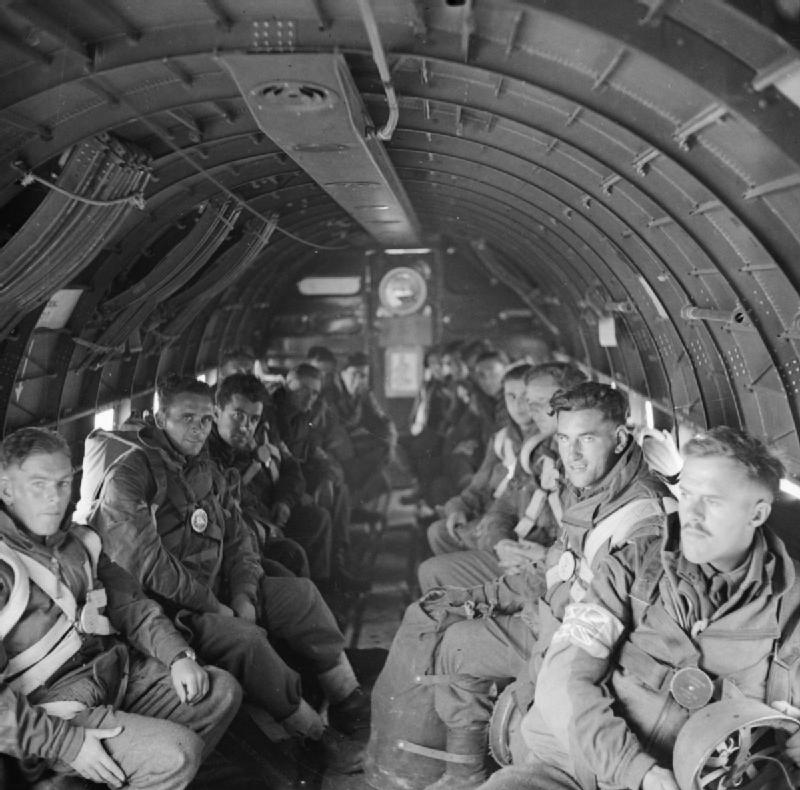
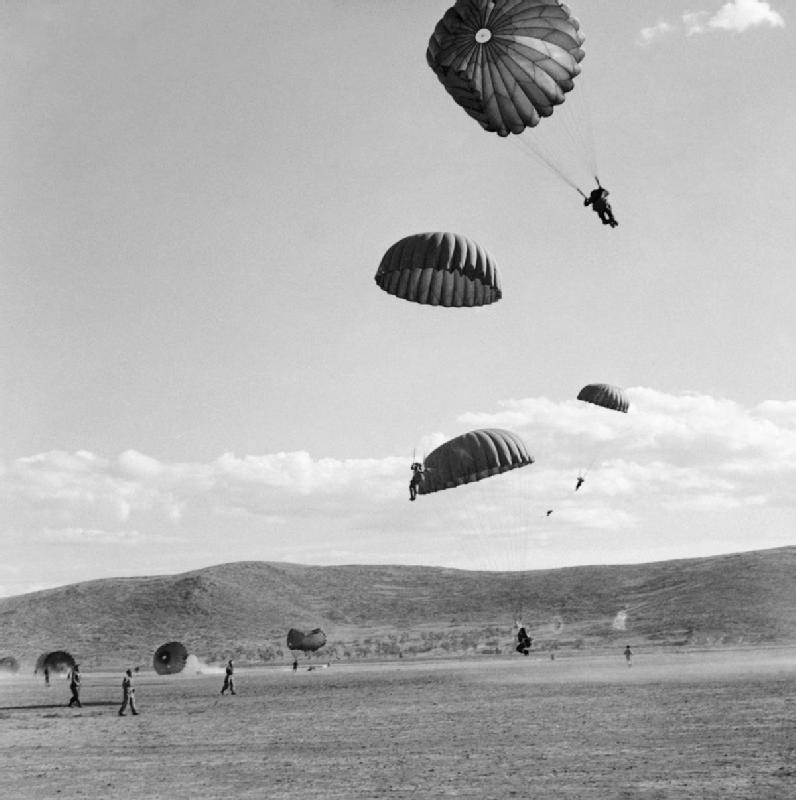
Source: IWM ©
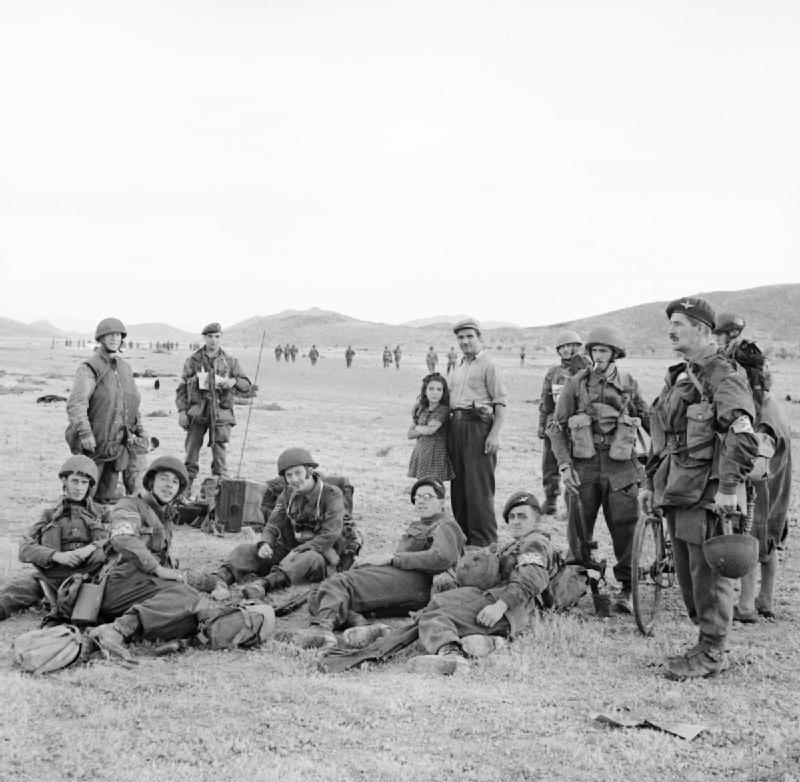
On the 11th of October, the German Commander of Attica officially declared Athens an ‘Open City.’ The German Navy War Diary reports that: “Altogether, four motorised infantry units have left the Athens area with the last supply troops and parts of the Air Force.” In the early hours of the 12th of October, the remaining Wehrmacht rear guard unceremoniously evacuated Athens in their bid to escape the country. As a parting gesture, the port of Piraeus was ordered destroyed after German shipping was either scuttled as block-ships or had fled over the previous few days. Due to continuous naval action to the north around Cape Kassandra and the Gulf of Salonica (see ‘German Shipping’ below), much of it was laid up in Volos harbour on Friday the 13th of October (for more on this, click on ‘WWII Bombing of Volos‘). Here it was successfully bombed by Venturas flown by the SAAF on a mission which could have otherwise been said to be jinxed. Four out of the twelve aircraft involved developed engine trouble, causing three to retire before reaching their target.
GERMAN SHIPPING: The Germans had a regular supply route up and down the east coast of Greece from Piraeus to Salonica via Sounion, Chalkis, Trikiri (entrance to the Pagasitikos Gulf and Volos) and Saloniki Bay. In October 1944, not only was this route harassed from the air, forcing the Germans to confine their movements to night-time, but it was also severely compromised by Allied submarines. Royal Navy records and logbooks delineate that on the 2nd of October 1944, the German minesweeper Zeus was attacked at 09:58 hrs, six nautical miles south south-west of Cape Kassandra by a salvo of four torpedoes fired by the British submarine HMS Unswerving. They all missed. On the same day, a German convoy loaded with soldiers and supplies travelling from Piraeus to Thessaloniki was attacked by the French submarine FFN Curie. In a salvo of four torpedoes, the steamer Zar Ferdinand was sunk at 21.05 hrs, ten nautical miles north west of the island of Skaithos. Also in the convoy was the Bertha, a tanker which rescued 240 survivors while other escort vessels, including the torpedo-boat TA-18 picked up the rest. At 01:10 hrs on the 3rd, the same convoy was attacked further north by HMS Unswerving firing three torpedoes (the fourth being defective). The Bertha was hit and sunk. The TA-18 and other escorts picked up the survivors – meaning that the original 240 survivors from the first attack had been shipwrecked twice in the space of just four hours on the same night. (For more on TA-18, click on ‘Last WWII Naval Battle in the Aegean’.)
Inclement weather cancelled a second wave of parachute drops over Megara airfield on the 13th, although nine gliders laden with construction equipment to repair the runway managed to land. On the same day, a single Royal Australian Air Force (RAAF) 2 Baltimore bomber dropped a package on the small island of Poros, at the entrance of the Gulf of Athens. It contained vital information necessary for the British assault on Aegina island the following day. On the 14th, a further twenty aircraft towing gliders were forced back from Megara because of the bad conditions. However, sixty eight C-47’s were somehow able to drop over 1,000 personnel and 130 supply containers. The backdoor to the capital was now wide open.
On the afternoon of the 14th, the British 9th Commandos – the ones who had landed on Kythera island almost a month earlier – along with a squadron of the Greek Sacred Regiment crossed from their advanced base at Poros to Piraeus. Finding it deserted, they pressed on and subsequently became the very first Allied soldiers to enter the capital. Using caiques (sailing boats) to traverse the Gulf of Elefsinos and disembarking at Skaramanga, units of the 2nd Paratroop Brigade soon joined them.
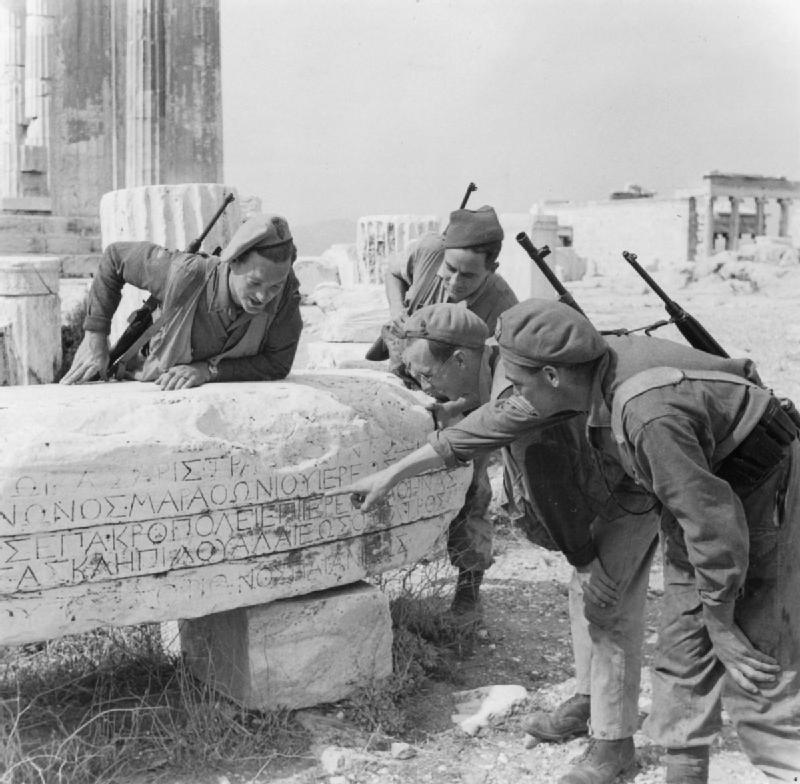
On the condition of Athens left by the Germans, U.S. Military Intelligence states that: “The enemy reportedly has carried out-extensive demolitions to ground installations in Athens-Piraeus area before withdrawing, although the main electric supply and Marathon dam is unharmed.” A further report made on the following day explains that; “ELAS claim capture of enemy party returning to Athens to try to wreck central power station.” It seems that in their haste to leave, the Germans had forgotten to turn out the lights!
Elsewhere, Greek resistance was harassing enemy communication lines and retreat routes in Macedonia and Thessaly “with good effect,” according to U.S. Military Intelligence. Wrecked bridges and mines planted by the resistance hampered the German withdrawal. “The Germans are apparently determined to keep Volos-Larissa road open; ELAS report a successful raid on a large enemy column advancing up this road. Other Greek units are active against Athens-Salonika railroad, reporting several successful forays recently.” On the 14th of October, the resistance began the liberation of Ioannina, the largest city in north western Greece. It would only take them a day.
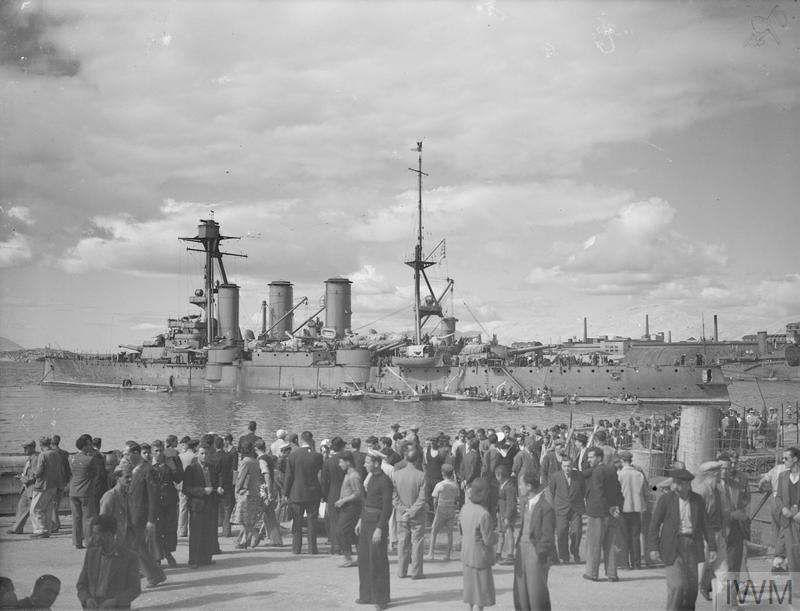
On the 15th of October, an Allied task force comprising four British cruisers and four Allied destroyers along with other British and Greek naval vessels anchored off Piraeus at 17:30 hrs. They were transporting the British III Corps and troops of the loyalist remnants of the Greek Army who had been exiled since 1941. 3 Disembarkation was delayed by the minefields and scuttled wrecks left by the Germans. However, the next day saw Lieutenant General Ronald Scobie of the British Armed Forces assume his role as the Allied High Commander in Greece. His primary mission was to maintain order now that the Germans had gone. It was to prove a much more difficult task than anyone could possibly have imagined.
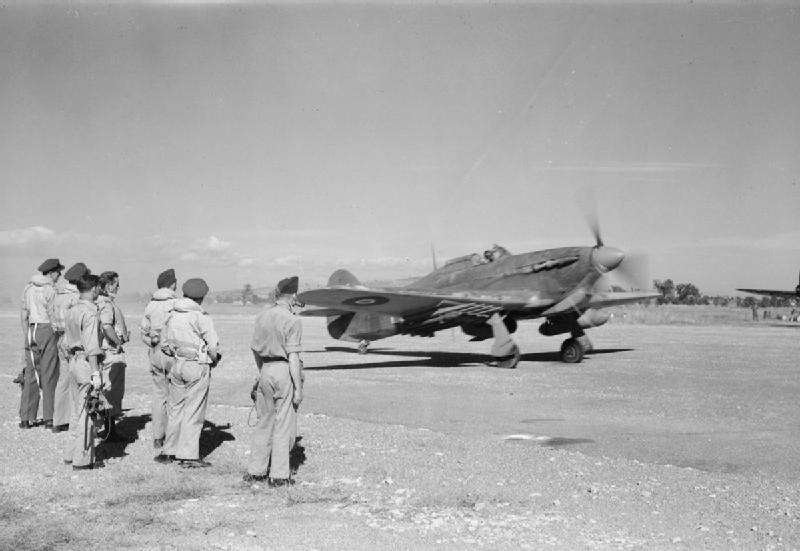
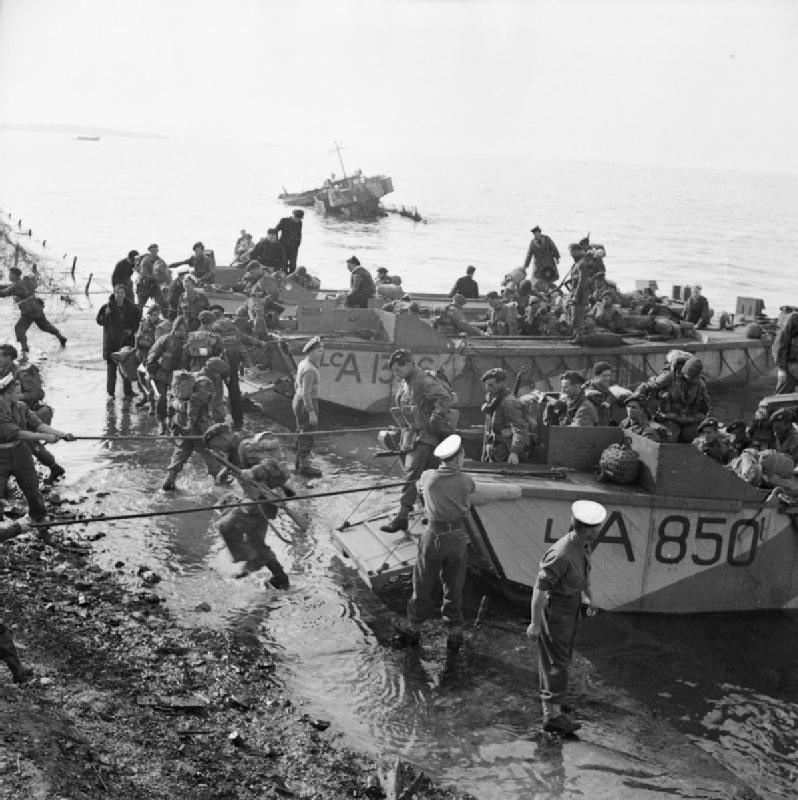
Although German garrisons still remained on many significant islands, including Crete and Rhodes, by the end of October 1944, the expulsion of Germans from the mainland was more or less complete. The Greeks were finally free of their oppressors. It was four years – almost to the day – after Premier Ioannis Metaxas had refused to capitulate to the Italians on the 28th of October 1940. Justifiably, there was flag-waving jubilation in the streets as each town was liberated in turn from south to north.
It was both a success and a milestone. But if history is to teach us anything, there is always a bigger moment…
More to follow…
Although the Nazis had finally been expunged, the country found itself teetering dangerously on the precipice of civil war. Learn the circumstances of Greece’s fate in the next and final instalment of this special anniversary series.
Delve Deeper
The following materials and footnotes offer a richer context to the story.
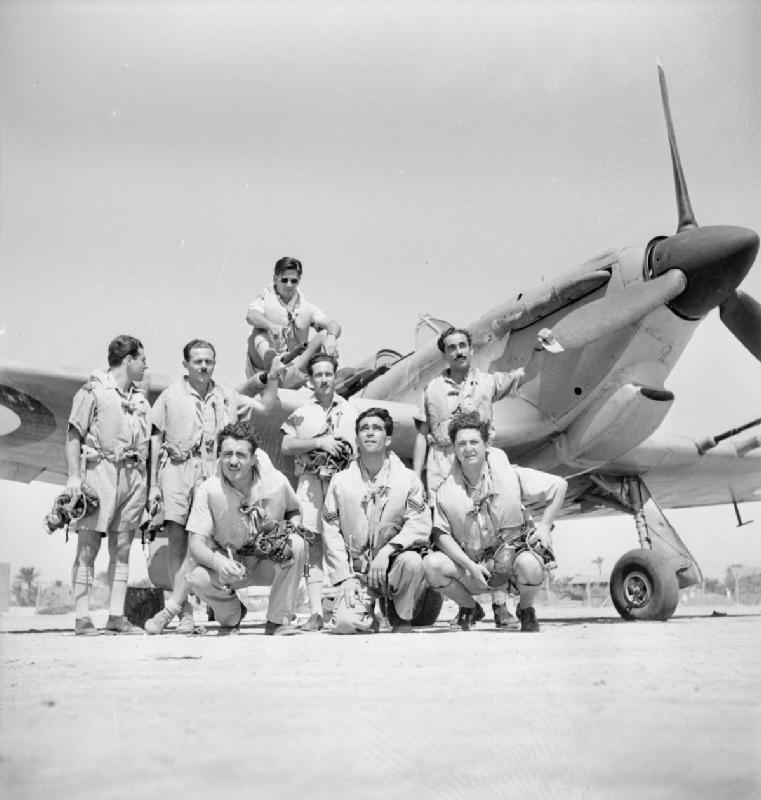
Circa 1942. Source: IWM ©
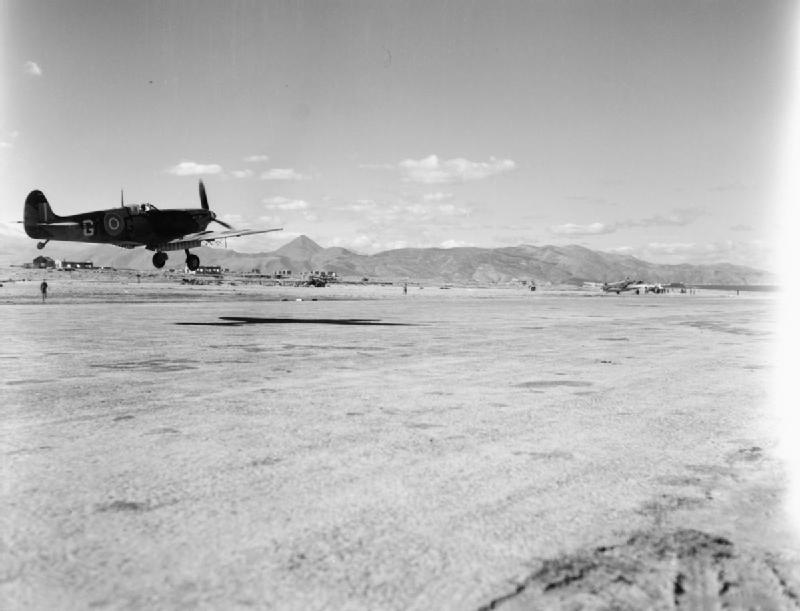
GREEK PILOTS: There were two squadrons in the RAF (Nos. 335 and 336) manned by Greek pilots. They flew the latest Supermarine Spitfires and were based in Biferno, Italy in 1944. While Squadron 336 flew attack missions over the Balkans, Squadron 335 was part of the liberation of Greece. According to the official British archives, Flight Lieutenant Volonakis and Flying Officers Mitrakis and Margaritis became “the first members of the Hellenic Air Force to set foot on Greek soil since 1941” when they landed at Araxos at 17.15 hrs on the 8th of October 1944.
By the 11th of October, some of Squadron 335 along with elements of Squadron 32 had billeted at Araxos with the locals as there were not enough tents and equipment to do otherwise. They began carrying out regional missions such as shipping sweeps of the Corinth Canal. There was no enemy contact. However, they found “nothing but destruction everywhere.” The enemy had blown both sides of the canal and both bridges.
Of the locals they reported; “For all the internal strife in Greece, our pilots were enthusiastically welcomed by all parties, especially by the civilians.” The fiscal situation is also made reference to: “German paper drachmae are plentiful and appear in 100 million notes which the peasants use as cigarette spills etc.”
A spill is a strip of paper used to light a candle, cigarette or pipe. It is telling that monetary reforms made by law just a month later valued a newly issued post-war 1 drachma note at 50 billion war-time drachmas, such was the hyperinflation at the time.
On the 19th of October, Squadron 335 had finally received orders for the entire flight to be permanently based in Greece. “Never has a Squadron prepared for a move more willingly,” the report by the Commanding Officer concludes.
Footnotes
- THE BEAUFIGHTER: The Bristol Beaufighter was a two seater, two engined long-range fighter aircraft that packed a punch with four cannon, seven machine guns (six front, one rear) and eight 90lb (41kg) rockets. It could also carry one torpedo or two 250lb (113kg) bombs instead of the rockets. The fuselage was large enough to fit the bulky radar equipment of the time, so it could operate at night or in bad weather.
In addition to playing an instrumental role in driving the Axis powers out of Greece, they were used by the RAAF (Royal Australian Air Force) in the Pacific theatre. Approximately 370 were manufactured at Fishermens Bend, Melbourne by the Commonwealth Aircraft Corporation.
Very few remain in the world today, none of them are airworthy. One is located at the Moorabbin National Air Museum in Melbourne. The on-going restoration of another is a project being undertaken by the Historic Aircraft Restoration Society based at Albion Park, NSW. When complete, the world should see a Beaufighter take to the skies again.
↩︎ - AUSTRALIAN BOMBER SQUADRONS: Two squadrons of RAAF Baltimore bombers played a role in the liberation of Greece. Squadron 454 operated in the Aegean primarily in a long-range anti-shipping/submarine reconnaissance role. One of its biggest successes was spotting the Livenza and her convoy. Being one of the largest cargo ships the Germans had in the area, she was escorted by eight ME-109 German fighter planes. While shadowing the convoy, a Squadron 454 Baltimore was shot down by one of those escorts. Nonetheless, the Livenza was sunk on the 22nd February 1944 off the northern coast of Crete by the combined efforts of twenty-four RAF
Beaufighters and four U.S. B-24 Mitchells. Three of the Beaufighters and two of the ME-109s were lost in the attack.
With the liberation of Naxos and Santorini islands in October 1944, attention turned to the German stronghold on Milos (also spelt Melos) and its substantial gun batteries. To complement the severe poundings delivered by Royal Navy warships, RAAF Squadron 459 based in Berka, Libya were called in. Between October the 25th and November the 2nd, they ran seven bombing runs. However, the German garrison proved unshakable, even when its commander was ambushed in his car and killed by a Sacred Regiment patrol on the 5th December. Squadron 459 continued operating in the Greek theatre until February 1945 when it was recalled to the UK. Although the Germans did not surrender many of the Aegean islands until war’s end, they remained a contained threat and extensive aircraft operations over the Aegean were no longer needed.
↩︎ - GREEK REBELLION: The political dissension in Greece was so great that it even affected the Greek Armed Forces who were in exile in Egypt, despite their being under the King’s direct control. In April 1944, many of the rank and file who supported EAM rebelled. Additionally, sailors on Royal Greek Navy ships moored in Alexandria mutinied and tossed their officers overboard. Although there was bloodshed, the rebellion was soon put down under British supervision. However, as 8,000 rebels had to be interned and 2,000 others disarmed, it halved the strength of the Greek Army, thereby considerably weakening the King’s position.
↩︎
